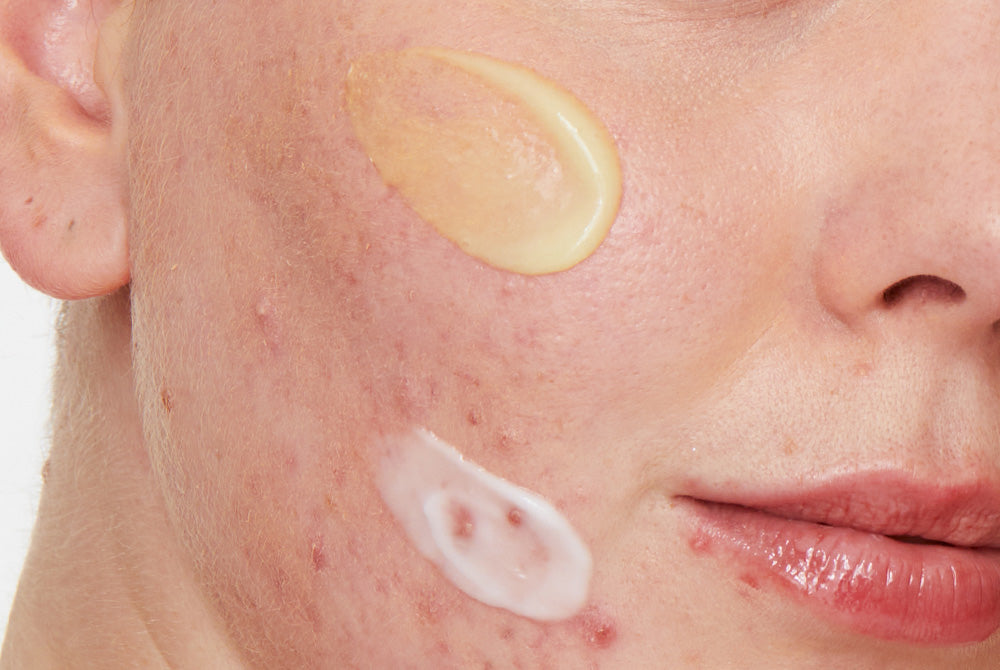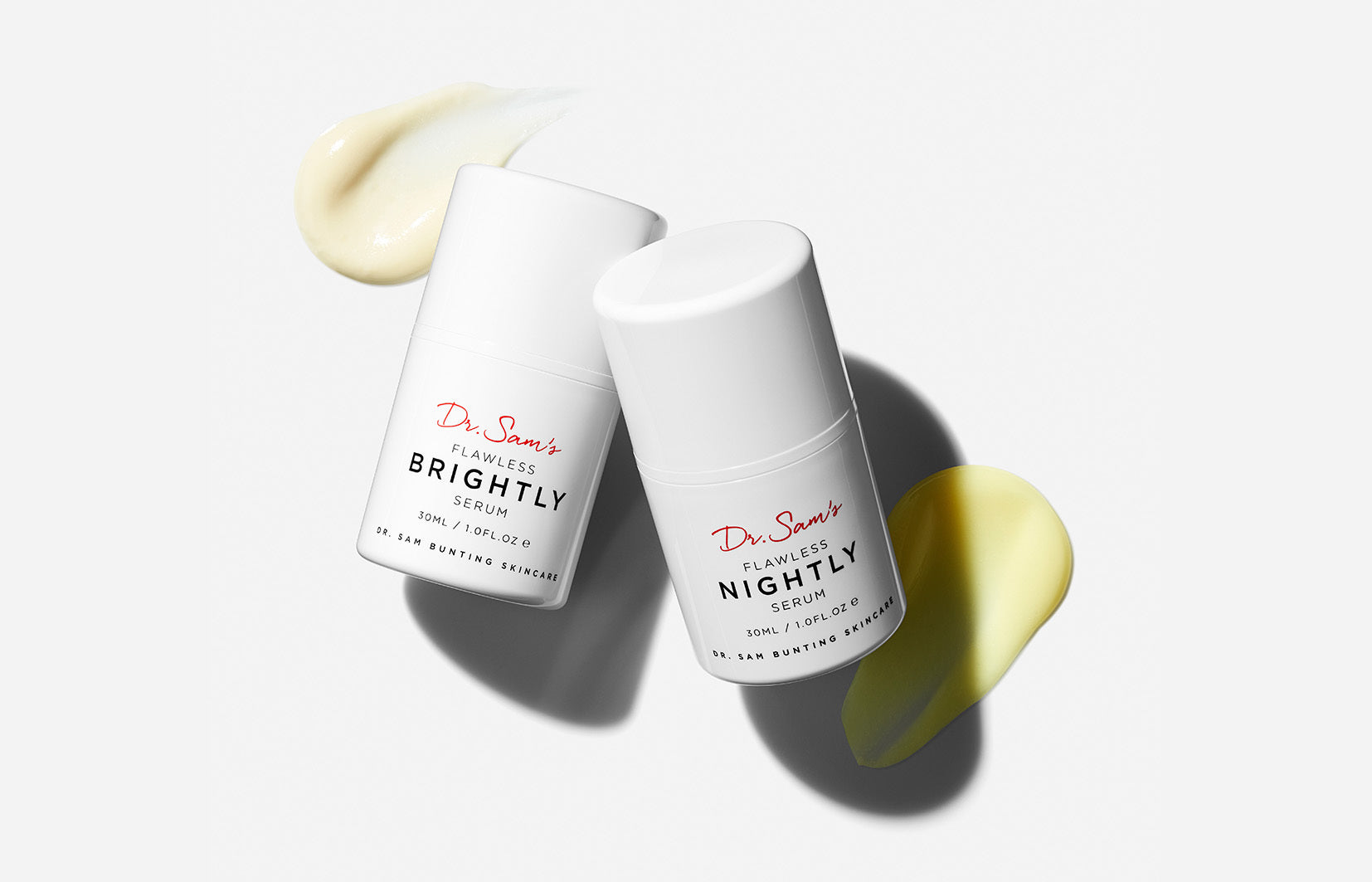Cheatsheet
How To Take Charge of Dry Skin
I wanted to share my approach to handling dry skin. It’s so tough in winter. Low humidity with cold air mean water evaporates faster from the skin than usual. Plus chafing from wind and central heating desiccation… and if your skin is dry to start off with, then it can be a really challenging time. But it’s not just those with dry skin that are affected - even those with normal skin can behave quite differently under these circumstances. If you fail to deal with it correctly, it can prevent you from using actives to manage your other skin concerns, which can be a real blow. And dry skin is matte, tight, itchy and uncomfortable, not to mention the fact that it wreaks havoc with make-up application. But with a few strategic adjustments, you can improve hydration, bolster your barrier and get your skincare routine back on track.
So first, let's look at what happens in dry skin
Our skin’s outermost layer the stratum corneum is made up of a bricks and mortar structure. The dead skin cells are the bricks and the fatty mortar contains ceramides, cholesterol and free fatty acids. Now, if you’re born with dry skin, your genetics predispose you to a tendency to lose water from the skin at a faster rate than someone who has normal or oily skin. So people with dry skin may have less mortar, and the dead skin cells may contain less Natural Moisturising Factor.
But here’s the thing - anyone can develop dry skin. This happens when the integrity of our wall breaks down with the combined insult of the elements - sun, wind and cold all contribute - and simple activities like washing. The surfactants in cleansers and contact with water steal away our Natural Moisturising Factor and lipids which allows the wall to crumble….the water in our skin is then able escape more easily, and as the water content of the skin drops, the enzymes that naturally exfoliate our skin don’t work, allowing skin cells to pile up and, voila - rough, dry patches appear.
Once this crumbling starts, it allows more irritants in as the barrier fails, and the process accelerates.
So how do we go about addressing this?
The first thing is to focus on your skin’s capsule wardrobe - the things within your control.
That means:
Tip 1
Careful cleansing
This is the time to rethink foaming cleansers, anything with active ingredients and to stop use of physical exfoliation, including flannels. The ideal cleanser is something cream or lotion-based that has gentle surfactants, so you’ll not deplete skin further. It’s also important to look at how you cleanse - the simple action of water on the skin is drying so minimise contact time and temperature to cleanse dry skin with care.
Tip 2
Eliminate irritants
Many skincare ingredients are potential irritants - and when your skin is dry, things penetrate more readily as I said. So it’s definitely the time to look at the INCI list of what you’re using - fragrance and essential oils are common provocateurs so be decisive and eliminate anything that draws a red flag.
You may also need to reduce the number of actives or indeed downgrade the potency. If skin is acutely dry and everything stings, I’d advise you stop all actives and rebuild your barrier first in order to move forward.
Tip 3
Barrier repair
You’ll need the right cleanser and the right moisturiser. It’s wise to keep it that simple until your barrier is back up and functioning. But of course, not all moisturisers are equal. It’s key that you seek out those that contain occlusive ingredients - meaning they lock water in by preventing trans-epidermal water loss (just like cling film). And that it contains barrier repair ingredients, to help rebuild the wall.
Key occlusive ingredients include shea butter, squalane, silicones like dimethicone and also mineral oil. And barrier repair ingredients include ceramides, cholesterol, phytosphingosine, and niacinamide. Provided you have both these ingredient groups present, humectants, which are water-attracting ingredients, are also helpful. Look out for glycerin, urea and hyaluronic acid.
Products I recommend for dry skin
Cleansers
LRP Toleriane Dermo-cleanser
Dr Sam’s Flawless Cleanser
Avene Tolerance Extreme Cleanser
Moisturisers
Cerave Moisturising Lotion
Avene Recovery Cream Rich
Dr Sam’s Flawless Moisturiser
Avène Tolérance Extreme Emulsion
Avene Tolerance Extreme Cream
La Roche Posay Toleriane Ultra
Sunscreens
La Roche Posay Anthelios Comfort Cream SPF 50 (Untinted)
Dr Sam’s Flawless Daily Sunscreen SPF50
Jan Marini SPF 45 Tinted (Medium-tone)
Dr Sam’s Flawless Gossamer SPF 50 (Tinted and Untinted)
How to progress
If you’re resetting on a brand-new routine, I’d recommend giving skin a good 2 weeks to get established and happy. Once that’s all working for you, you can then think about adding in active ingredients. This will differ depending on concern.
BUT - key thing here is that we’re on *go-slow mode*.
One active at a time is key.
And it’s important to allow at least 4 - 6 weeks before adding in an additional ingredient. This reduces risk of both irritating skin and not knowing which step is doing it…..and it allows you to truly assess the impact of each additional step. This is really important!!!! Just because an ingredient exists does not mean you need to use it!!!
A brief word on actives
The choice of active does depend on what other concerns you suffer from, of course. But those I particularly like are niacinamide and azelaic acid. And this for 2 reasons. Firstly, they are both hardworking multi-taskers. They do loads, whether you’re blemish-prone, redness- ridden or pigmentation-speckled. But here’s what’s key - they are great at priming skin for other ingredients ; niacinamide bolsters barrier function and azelaic acid turns down reactivity. So I’ll tend to start one or the other. It’s also a really good litmus test - if someone can tolerate azelaic acid, they’re more likely to be able to cope with a retinoid later on in my experience.
Know your actives strength - start low, use small amounts and do it less often (every other day or even every third day). …. And build up to daily use or what’s comfortable over the course of 6 weeks.
What about masks?
Face masks are a bit like a puppy - you don’t need one but they’re very nice. In essence they are souped-up moisturisers that are probably just a bit thicker than your usual everyday one. So they can feel very comforting when skin is dry. But again, they need to be scrutinised for rogue ingredients that might aggravate. I’m of the opinion that if you’re doing the right hydration step everyday you don’t really need one.
But if you’re going to, definitely stay away from masks that claim to clarify, purify, decongest or exfoliate - these are likely to contain red flag ingredients. You want to stick to the hydrating mask category.
I quite like Avene Tolerance Extreme Mask, but some of their newer reformulated ones have too many ingredients. In the end, a thick layer of their Recovery Cream or Cicalfate is probably just as good.
Final things to consider
- Consider a humidifier. This can make a big difference to dry skin, especially when used in your bedroom overnight. I like Stadler.
- Take care with drinks that can dehydrate, such as alcohol and caffeine. Make sure you drink adequate water to compensate.
- Boost your intake of skin-loving omega 3 fatty acids - oily fish and flaxseeds will both boost barrier function over time. Or take a good quality omega 3 supplement - I like Barleans and Minami.
- And manage stress and poor sleep - both of these can disrupt barrier function, increasing trans-epidermal water loss.





















